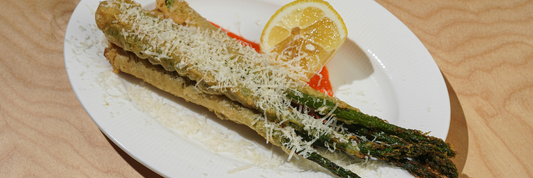The demand for gluten-free and plant-powered foods is skyrocketing, and ramen restaurants are taking notice. But is this a passing fad, or a game-changing opportunity? Let’s explore why these dietary shifts matter and how your restaurant can successfully adapt.
Why Are More People Choosing Gluten-Free and Plant-Based Noodles?

1. Health & Dietary Preferences
- Rising gluten sensitivity: 1 in 7 Canadians have a diagnosed food allergy or intolerance, and 42% actively try to reduce gluten intake.
- Easier digestion: Many consumers report feeling less bloated and more energized after eating gluten-free options.
- Higher demand for plant-based diets: Vegan and vegetarian diets are growing, with more people avoiding animal-based ingredients.
2. Ethical & Environmental Concerns
- Animal welfare: Many diners avoid traditional ramen ingredients like bone broth due to ethical concerns.
- Eco-conscious choices: Producing plant-based foods generates fewer greenhouse gas emissions than animal-based alternatives.
3. Expanding Culinary Possibilities
- Exciting new flavors: Ingredients like chickpea, lentil, and quinoa noodles offer unique textures and tastes.
- More inclusive options: Plant-powered ramen makes dining more accessible for people with allergies to dairy, eggs, or shellfish.
What Are the Digital Transformation Trends for Ramen Restaurants?
Can Gluten-Free and Plant-Based Noodles Replace Traditional Ramen?
Absolutely—if done right. Here’s how they compare:
| Category | Traditional Ramen Noodles | Gluten-Free & Plant-Based Noodles |
|---|---|---|
| Base Ingredient | Wheat flour | Rice, quinoa, lentils, chickpeas, or konjac |
| Protein & Fiber | Moderate | Often higher, especially in legume-based noodles |
| Calories & Fat | Varies | Often lower in calories and fat |
| Texture & Flavor | Classic chewy bite | Nutty, slightly softer texture, varies by type |
| Sustainability | Higher carbon footprint | More eco-friendly |
Key Takeaway: Plant-based and gluten-free noodles can offer similar satisfaction, especially when paired with flavorful broths and toppings.
How This Trend Impacts Your Restaurant
Potential Costs
- Higher ingredient prices – Specialty flours (e.g., chickpea, lentil) cost more than wheat flour.
- Experimentation required – Finding the right blend for taste and texture takes time.
- Storage adjustments – Some gluten-free options have different shelf lives and handling needs.
Key Benefits
- Attract new customers – Expanding your menu brings in health-conscious and plant-based diners.
- Increased revenue – Unique, high-quality offerings allow for premium pricing.
- Stronger brand image – Restaurants that cater to dietary needs build loyal followings.
- Sustainability boost – Plant-based menus align with growing eco-conscious consumer values.

How Can Restaurants Successfully Adapt?
1. Menu Innovation
- Start small—introduce one or two plant-based ramen options and gauge customer interest.
- Blend flours for better texture (e.g., a mix of rice and quinoa flour for a firmer bite).
- Offer customizable ramen bowls with different broth and noodle choices.
2. Smart Sourcing & Storage
- Partner with local suppliers for high-quality, cost-effective gluten-free and plant-based ingredients.
- Ensure proper storage and handling to maintain ingredient freshness and avoid cross-contamination.
3. Staff Training & Customer Experience
- Educate staff on dietary restrictions, ingredient handling, and preparation techniques.
- Clearly label gluten-free and plant-based options on menus to make choices easy for customers.
- Use enticing descriptions and visuals to attract hesitant diners.
4. Marketing & Promotion
- Feature plant-powered dishes on social media with vibrant, mouth-watering photos.
- Run limited-time offers to encourage customers to try new options.
- Collaborate with local health-conscious communities and influencers to expand reach.
The gluten-free and plant-powered trend isn’t just a passing phase—it’s a reflection of evolving consumer preferences. Restaurants that embrace these dietary shifts stand to gain loyal customers, increased revenue, and a stronger brand reputation. By strategically incorporating gluten-free and plant-based ramen options, you can future-proof your menu and stay ahead of the competition.




